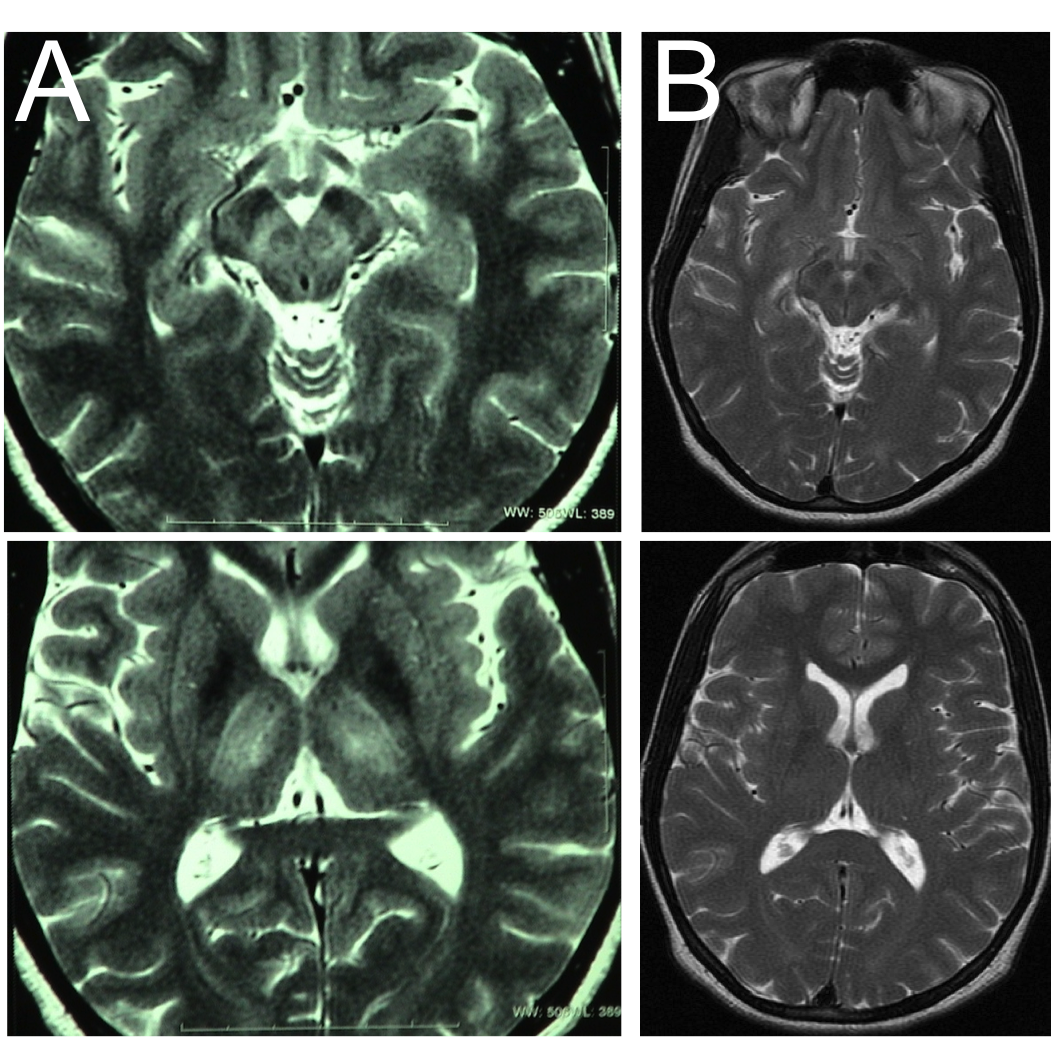Session Information
Date: Tuesday, June 6, 2017
Session Title: Rare Genetic and Metabolic Diseases
Session Time: 1:45pm-3:15pm
Location: Exhibit Hall C
Objective: To present a case with Wilson’s disease (WD) whose neurological and imaging alterations disappeared after ammonium tetrathiomolybdate (AT) and zinc acetate (Zn) controlled therapy.
Background: The treatment of Wilson’s disease remains a challenge for clinicians. A strict control of the different copper pools is needed.
Methods: Case report. Therapy control formula: “Free” serum copper (FC) = total serum copper – (serum ceruloplasmin x 3). De-coppering state: FC <10µg/dL. Copper deficiency: FC <5µg/dL
Results: A 25-year-old woman presented a rapidly progressive tremor with severe functional impact of 1 year in duration. She had an asymptomatic chronic liver disease without portal hypertension. Physical exam: Bilateral Kayser-Fleischer rings and rest tremor in both upper limbs, both proximal and distal, of moderate amplitude. More significant tremor in both upper limbs appeared a few seconds after taking any antigravity posture, or simple action (“wing beating” tremor). Once it appeared, was of increasing amplitude, and extended to the whole body, trunk, head and lower extremities. It would only disappear if she placed her upper limbs again in the rest position. Occasionally, dystonic right hand postures were observed. No other abnormalities. Investigations: Normal serum copper, elevated 24-hour urinary copper excretion and decreased serum ceruloplasmin. Normal liver function tests. She was compound heterozygote for mutations p.L1305P and p.H1069Q in ATP7B. Pretreatment brain MRI (figure 1A): Bilateral and symmetrical hypointensity in globus pallidus and substantia nigra and hyperintensity in putamen, lateral thalamus, central pons and dorsal midbrain. Initially, she was treated with D-penicillamine, Zn and vitamin B6, with worsening of the neurological symptoms and poor tolerance. D-penicillamine was withdrawn and started with AT. She had a spectacular improvement at 15 days of onset treatment, being asymptomatic at 4 months. She reached de-coppering state at 7 months of starting AT and it was removed, leaving only maintenance Zn (FC 5-10µg/dL). A 4-year post treatment brain MRI was normal (figure 1B). The patient remains asymptomatic after 8 years of follow-up.
Conclusions: The association of AT+Zn as starting therapy and Zn as maintenance therapy were effective in the control of Wilson’s neurological disease, through strict control of the different copper pools.
References: Weiss KH, Stremmel W. Clinical considerations for an effective medical therapy in Wilson’s disease. Ann NY Acad Sci 2014;1315:81-85.
To cite this abstract in AMA style:
I. Posada, C. Garfia, F. Ostos, A. Ramos. Disappearance of the clinical and imaging manifestations in Wilson’s disease after controlled therapy with tetrathiomolybdate and zinc [abstract]. Mov Disord. 2017; 32 (suppl 2). https://www.mdsabstracts.org/abstract/disappearance-of-the-clinical-and-imaging-manifestations-in-wilsons-disease-after-controlled-therapy-with-tetrathiomolybdate-and-zinc/. Accessed December 25, 2025.« Back to 2017 International Congress
MDS Abstracts - https://www.mdsabstracts.org/abstract/disappearance-of-the-clinical-and-imaging-manifestations-in-wilsons-disease-after-controlled-therapy-with-tetrathiomolybdate-and-zinc/

